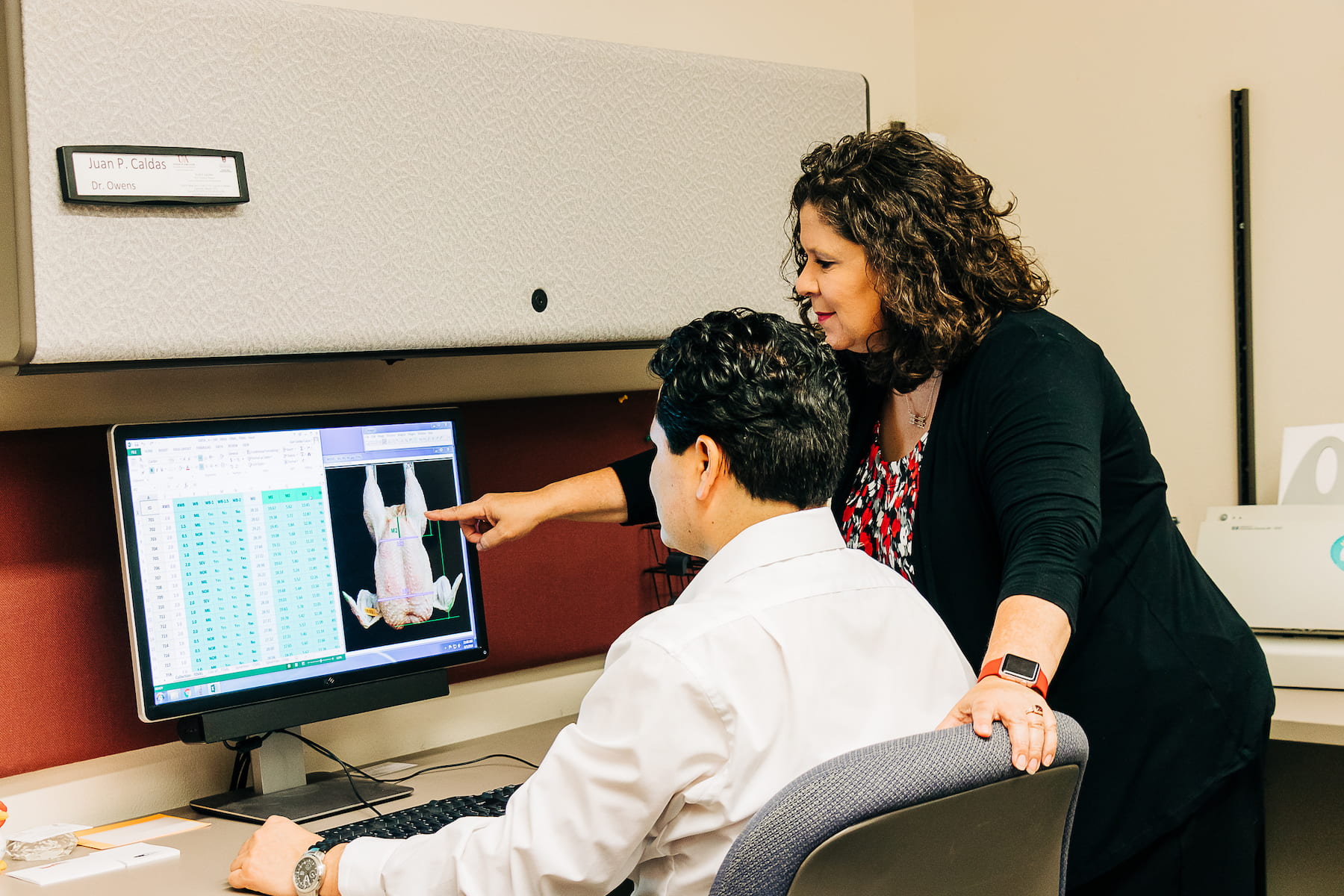Researcher Tackles Problem of Toughness in White Meat Chicken

The Problem
As the popularity of white meat chicken has risen, so have instances of tough, flaky and hard filets known as “woody” breast meat. Why that happens and how to detect and process the meat is a puzzle Casey Owens is working to solve.
The Research
The woodiness is more common in larger birds of 8-9 pounds versus a 6-7-pound bird. One theory is that the fast-growing birds may be producing muscle faster than the blood vessels can support them, leading to muscle fiber damage and therefore increased collagen deposition. The meat is safe to eat, but with changes in composition such as increased collagen, there can be quality issues when cooking, including the meat becoming flaky, hard, rubbery or even crunchy or gristly.
In an era of pre-seasoned convenience foods, woody meat also doesn’t retain marination. The marination and the flavors it brings to the meat is key to consumer-friendly prep.
Owens and her graduate students have been looking at ways to detect woody breasts, including a way to grade the carcasses visually to predict the presence of woodiness. Another means of detection is by hand – feeling the product for firmness. However, Owens is out to develop a more objective means of evaluating the meat using instruments, whether it’s using image analysis or physical means such as compression properties.
Yet another aspect of this research is finding uses for this woody meat; for example, ground up as sausage or nugget products. This would allow the meat that is sorted to be used in products where final product texture is not greatly affected by the woody breast.
The Bottom Line
Owens has a patent pending on a means to visually assess poultry carcasses to predict woodiness in breast meat. This would help provide data to the plant for potential sorting purpose and about the environmental factors that influence its development.
The Researcher

Casey Owens
Dr. Casey Owens conducts research to evaluate the effects of preslaughter environmental conditions and processing techniques on muscle metabolism and meat quality of poultry. Her research has a strong emphasis on evaluating production and processing factors affecting poultry meat quality including tenderness, water holding capacity, color, and sensory attributes. Her recent research has focused on the quality of meat from broilers in big bird market programs including muscle quality defects and issues with meat texture.
Past research has included meat tenderness and methods for assessing meat tenderness with the development of the Meullenet Owens Razor Shear, and the use of marination in poultry meat for improved meat quality.
Hanning earned her BS in Poultry Science from Texas A&M, where she also earned her MS and Ph.D. in Food Science and Technology.
